ReservationSearch and reserve rooms
Click here to confirm, change or cancel your reservation
Shinkansen accommodation plan
提携法人専用予約
2024.03.15
A place to find the perfect knife for you
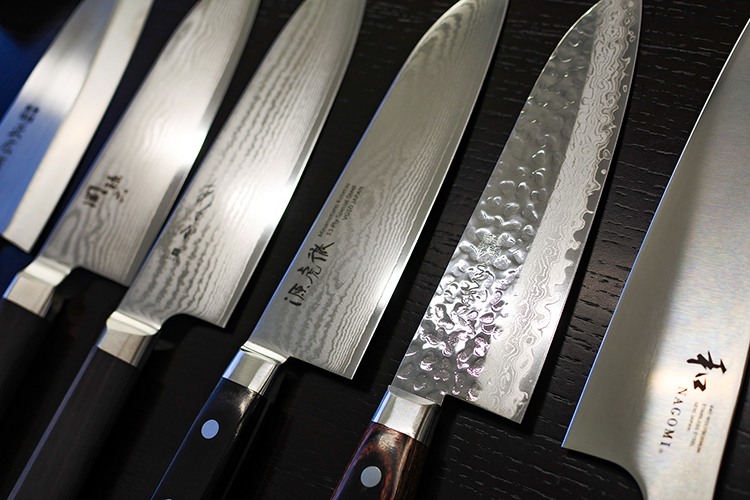
Seki City, Gifu Prefecture, is a town famous for its cutlery.
It is one of the three major cutlery production areas in Japan, and also one of the three major cutlery production areas in the world, alongside Solingen in Germany and Sheffield in the UK.
The roots of knives date back to the Paleolithic Age, when chipped stone tools were used to capture prey, skin, and cut meat. Since ancient times, knives have been closely related to the act of "eating" for humans. However, there are few opportunities to learn about knives, and the reality is that few people can answer questions about how to choose the right knife for you and how to maintain it.
A facility that could be called a savior for such modern people exists here in Seki City, Gifu Prefecture. It is a place where you can find the perfect knife for you. We visited the Gifu Seki Cutlery Hall.
We provide the knife and its story that is just right for you
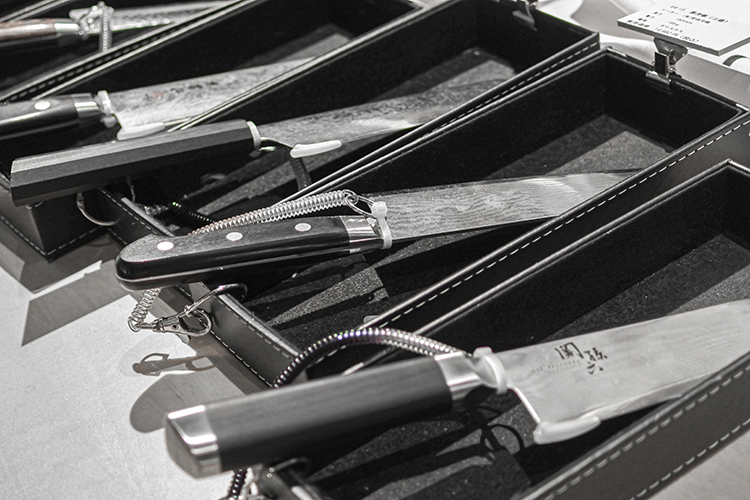
The "Holding Experience Corner" allows you to freely compare the grip of a Santoku knife without a blade.
Gifu Seki Cutlery Hall has staff who are knowledgeable about knives. They will help you narrow down your search from a wide range of knives based on the type of food you often cook, the shape of the handle that is easy to hold, and the weight in units of 10 grams, and then suggest the perfect knife for you.
The museum always has 2,000 different blades on display, with 400 being the main focus.
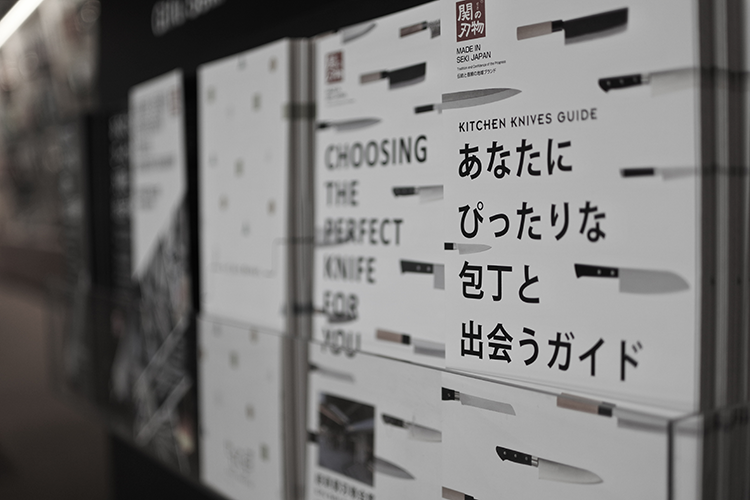
Most Seki knives are made from stainless steel. They are considered hygienic and easy to maintain, making them easy for anyone to use. However, in terms of sharpness retention alone, steel is considered superior to stainless steel. This is because steel is a harder material. The harder it is, the longer it will retain its sharpness. For this reason, steel has been used since ancient times. However, steel rusts easily, making it difficult for amateurs to use.
Stainless steel is resistant to rust, and steel retains its sharpness. Seki blades combine the best of both materials, using steel for the core and sandwiching it between stainless steel, making them hygienic and allowing them to retain their sharpness for a long time. It is this technical capability that has solidified Seki's position as the top blade manufacturer in Japan.
Seki's blade culture has its roots in the Japanese sword. Its shape changes with the times.
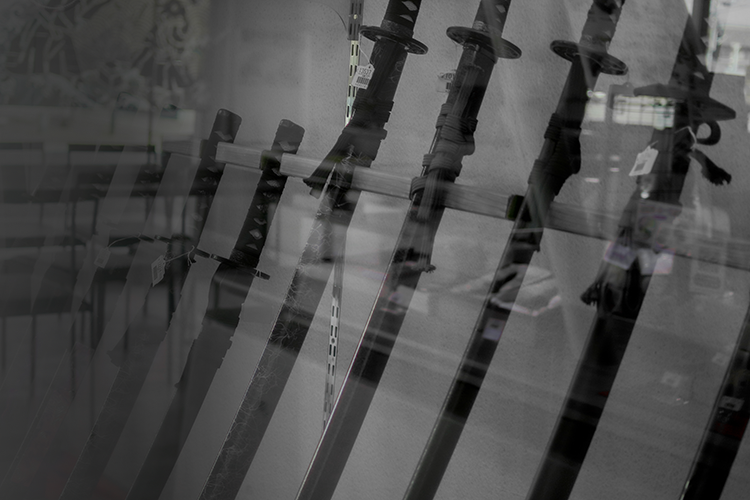
Japanese swords on display and for sale inside the museum
Japanese swords have been made in Seki since the Kamakura period, over 800 years ago. It is said that the origins of Seki blades date back to when the founder of sword-making moved to Seki City, where good quality water, charcoal, and clay for blade-making could be found.
Seki swords were presented to famous generals such as Oda Nobunaga and Tokugawa Ieyasu. At its peak in the Muromachi period, it is said that there were as many as 300 swordsmiths, and it is the only region where the Japanese sword school has been passed down to the present day. Watanabe Kanenaga established the Japanese Sword Forging School to teach Japanese sword making to pass on these techniques to future generations. The descendants of his students are the 10 swordsmiths who remain today, carrying on the techniques.
With the advent of the Meiji era, the sword ban was issued, and it became impossible to make Japanese swords. Seki blades also changed from Japanese swords to everyday items such as kitchen knives. Even through this process of change, the traditions and techniques of Seki's Japanese sword making are still alive and well.
To preserve the world-renowned Seki blades for the future
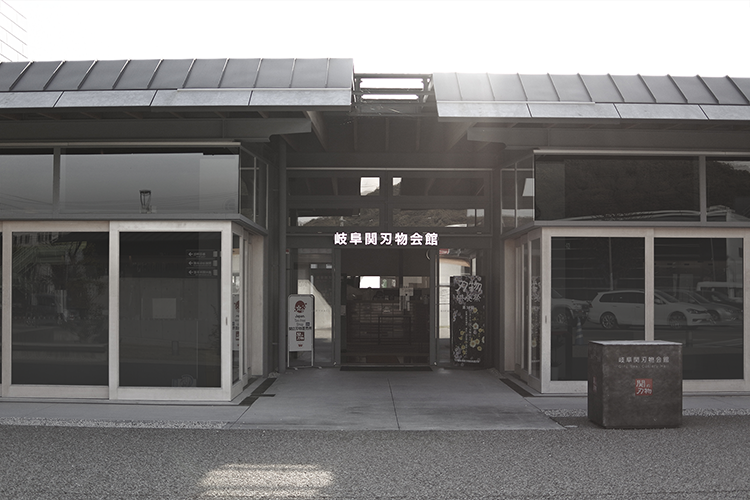
The exterior of the Gifu Seki Cutlery Hall
Currently, the environment surrounding Seki blades is rapidly adopting IT and digital transformation. In order to secure the next generation of craftsmen and to pass on traditional techniques, we are proactively adopting automation, which may seem contradictory at first glance.
Rather than working covered in iron dust, they believe that creating an environment where young people today can work comfortably is the key to connecting to the future. They are also working on cutting-edge initiatives such as developing new steel materials with venture companies. "If we don't do anything, the industry will fall into disuse. From now on, we will also focus on developing human resources," said Sakurada, Managing Director of the Gifu Seki Cutlery Hall.
This is a place where you can find the perfect knife for you, rather than just buying a knife to casually cut with. The knives make you want to use them carefully, and you can feel the history of Seki.
Gifu Seki Cutlery Hall
電話:0575-22-4941
Address: 4-12-6 Heiwadori, Seki City, Gifu Prefecture, 501-3874 (inside Seki Terrace)
Access: Get off at "Gifu Station/Meitetsu Gifu" Get off at Gifu Bus "Seki City Terminal" 15 minutes walk
1 minute walk from Nagaragawa Railway "Seki Terrace Mae"
Website: http://seki-japan.com/
*For details on business hours and holidays, please check the link above.




